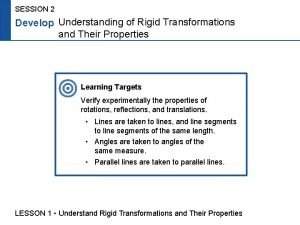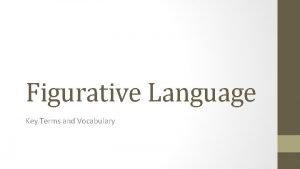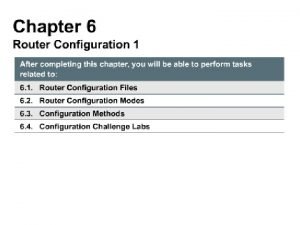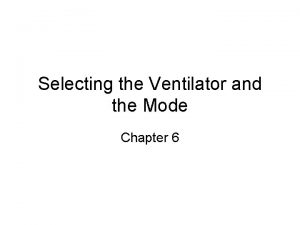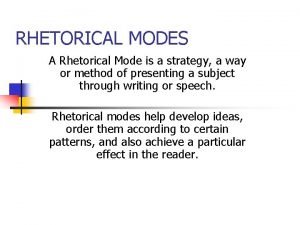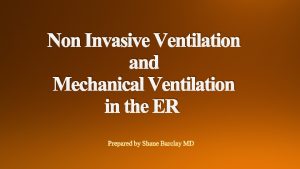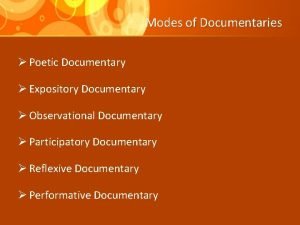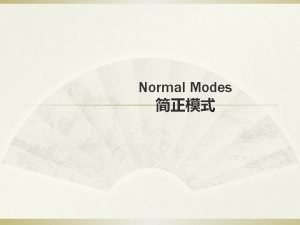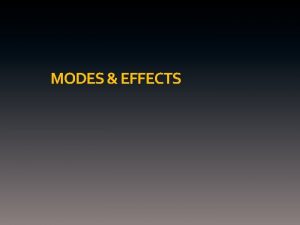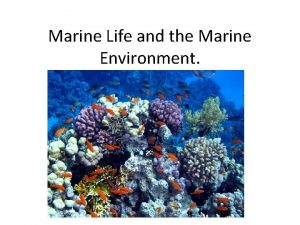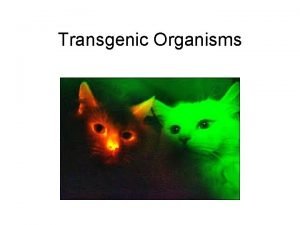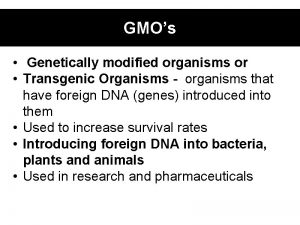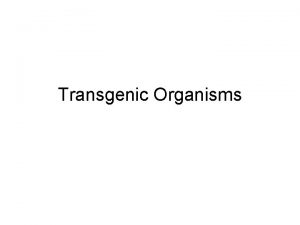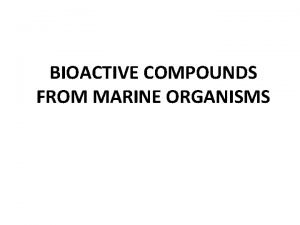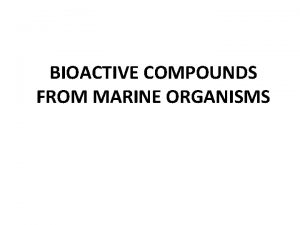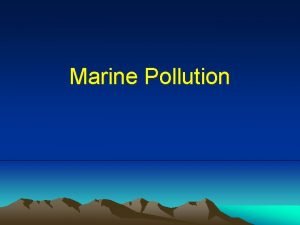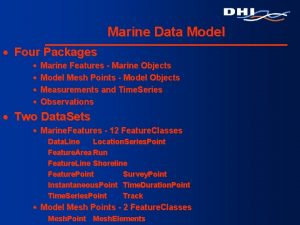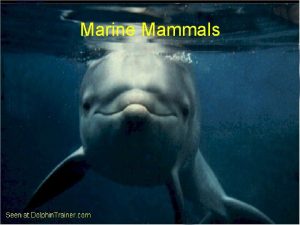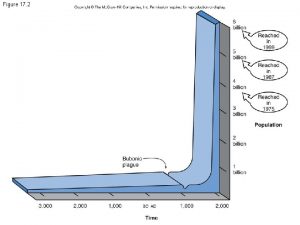Figure 4 1 Life modes of marine organisms





























- Slides: 29

Figure 4. 1 Life modes of marine organisms in a living offshore, muddy-sand community in the Irish Sea with a range of bivalves (a–e, l), gastropods (f), scaphopods (g), annelids (h, j), asterozoans (i), crustaceans (k, r), echinoids (m, n) and fishes (o–q). Insets indicate large and small burrowers. (From Mc. Kerrow 1978. )

Figure 4. 2 The transition from a living assemblage to a death assemblage. Relative proportions of different types of organism change in two living marine assemblages off the Texan coast. Living assemblages are dominated numerically by detritivores and herbivores, death assemblages by suspension feeders. (Based on Staff et al. 1986. )

Figure 4. 3 Census of organisms preserved in the Middle Cambrian Burgess Shale. Many groups, such as the priapulid annelid worms, together with the diverse arthropod biota, are rarely represented in more typical mid-Cambrian faunas, dominated by phosphatic brachiopods and trilobites. (From Whiltington 1980. )

Figure 4. 4 Schematic size–frequency histograms: (a) right (positively) skewed, typical of many invertebrate populations with high infant mortality; (b) normal (Gaussian) distribution, typical of steady-state or transported assemblages; (c) left (negatively) skewed, typical of high senile mortality; (d) multimodal distribution, typical of populations with seasonal spawning patterns; and (e) multimodal distribution, with decreasing amplitude, typical of populations growing by molting (ecdysis).

Figure 4. 5 Schematic survivorship curves: type I tracks, increasing mortality with age; type II, constant mortality with age; type III, decreasing mortality with age.

Figure 4. 6 Size–frequency histogram (a), polygon (b), cumulative frequency polygon (c) and survivorship curve (d) for a sample of 102 conjoined valves of Dielasma from the Permian reef base deposit of the Tunstall Hills, Sunderland. (From Hammer & Harper 2005. )

Figure 4. 7 Review of modern marine environments and their depth ranges, together with the approximate positions of the main benthic zones. (Based on Ager 1963. )

Figure 4. 8 Selection of marine lifestyles above, at the surface, within and at the base of the water column. (Based on Ager 1963. )

Figure 4. 9 Epifaunal tiering of marine benthic communities; infaunal tiering recorded in trace fossil assemblages is discussed on p. 205. (From Copper 1988. )

Figure 4. 10 Trophic groups, activity of members and their life sites. 1, Primary producers: phytoplankton in surface waters with (a) cyanobacteria and (b) benthic algae. 2, Herbivores: browsing and grazing gastropods. 3, Deposit feeders: (a) deposit-feeding gastropod and (b) shallow infaunal bivalve. 4, Suspension feeders: (a) semi-infaunal, byssally-attached bivalve, (b) shallow infaunal bivalve, (c) crinoid, (d) epifaunal bivalve, and (e) deep infaunal bivalve. 5, Carnivores: (a) nektonic fishes, (b) nekton-benthic fishes, (c) epifaunal gastropod, and (d) infaunal gastropod. (From Brenchley & Harper 1998. )

Figure 4. 11 Reconstructions of two different food chain communities. (a) A community with a suspensionfeeding food chain, displaying a variety of suspension feeders, collecting food in different ways (bivalves with a mucous trap or setae, bryozoans and brachiopods with lophophores, foraminiferans with cilia, corals with tentacles, and sponges with flagellae). (b) A community with a detritus-feeding food chain dominated by various types of bottom-dwelling deposit feeders and nektonic carnivores represented by a cephalopod and placoderm. (From Copper 1988. )

Figure 4. 12 (a) Trophic structures in and around a Late Carboniferous lake complex, Nýřany, Czechoslavakia. (b) Trophic structures in a Late Permian reef complex, northeast England. (a, based on Benton 1990; b, from Hollingworth & Pettigrew 1998. )

Figure 4. 13 Shoreline to basin transect showing the relative importance of different factors on the distribution of organisms. (From Brenchley & Harper 1998. )

Figure 4. 14 Distribution of living organisms across a depth gradient. (From Brenchley & Harper 1998. )

Figure 4. 15 Silurian marine benthic assemblage zones and identifying criteria. (From Brenchley & Harper 1998. )

Figure 4. 16 Construction of a rarefaction curve based on data collected from a mid-Devonian brachiopoddominated fauna, northern France. The main types of brachiopod are illustrated: (a) Schizophoria, (b) Douvillina, (c) Productella, (d) Cyrtospirifer, (e) Rhipidiorhynchus, and (f) Athyris. The curve levels off at about 300 specimens, suggesting this sample size is a sufficient census of the fauna. Magnification approximately × 0. 5 for all.

Figure 4. 17 In a two-way cluster analysis, an R-mode clusters the genera (bottom) and a Q-mode clusters the community type (right). The original data matrix is in the center of the diagram. The data indicate the reality of a shallow-water biofacies (Lingula and Eocoelia communities), and mid to deep shelf (Pentamerus and Stricklandia communities) and outer shelf to slope (Clorinda community) assemblages.

Figure 4. 18 Commensalism between (a) the gastropod Platyceras and a Devonian crinoid and (b) Spinocyrtia iowensis with an epifauna primarily located on the fold of the brachial valve adjacent to inhalant or exhalent currents. (Based on Ager 1963. )

Figure 4. 19 Selection of fossils from ancient hydrothermal vent sites. All specimens are pyritized and are contained within a matrix of sulfide minerals. (a) Gastropod: Francisciconcha maslennikovi from the Lower Jurassic Figueroa sulfide deposit, California. (b) Small worm tubes from the Upper Cretaceous Memi sulfide deposit, Cyprus. (c) Bivalve: Sibaya ivanovi from the Middle Devonian Sibay sulfide deposit, Russia. (d, e) From the Lower Silurian Yaman Kasy sulfide deposit, Russia: (d) monoplacophoran, Themoconus shadlunae and (e) vestimentiferan worm tube, Yamankasia rifeia. Scale bars: 5 mm (a, b), 20 mm (c–e). (Courtesy of Crispin Little. )

Figure 4. 20 A cocktail of Jurassic environments. Early Jurassic: (a) sand, (b) muddy sand, and (c) bituminous mud communities. Late Jurassic: (d) mud, (e) reef, and (f) lagoonal communities. (From Mc. Kerrow 1978. )

Figure 4. 21 Bambachian megaguilds. A near full complement of lifestyles is present in the Modern fauna (c), while fewer are represented in the matrices for the Cambrian (a) and Paleozoic (b) faunas. (d) The numbers of life modes have increased consistently through time.

Figure 4. 21 Continued

Figure 4. 22 Thicknesses of shell concentrations during the Ordovician-Silurian, Jurassic and Neogene. Thick shell beds are a phenomenon of the Modern fauna, mainly generated by bivalves. (From Kidwell & Brenchley 1994. )

Figure 4. 23 Climate change through time, showing alternations between icehouse and greenhouse worlds. (Courtesy of Christopher Scotese. )

Figure 4. 24 Some key indicators of climate and temperature. (Courtesy of Christopher Scotese. )

Figure 4. 25 Size changes in planktic foraminiferans from high and low latitudes during the last 70 Ma, compared to temperature profiles generated from oxygen isotope data and Mg : Ca ratios. Three phases are recognized, a first (65– 42 Ma) with dwarf taxa, a second (42– 12 Ma) with moderate-sized taxa, and a third (12 Ma to present) with large-sized taxa. Size increases are correlated with intervals of global cooling. (Courtesy of Daniela Schmidt. )

Figure 4. 26 Climate change through time illustrated together with changes in sea level and fluctuations in the intensity of volcanicity. (Based on various sources. )

Figure 4. 27 Snowball Earth scenario. (a) Continents are near the equator, increasing precipitation removes CO 2 from the atmosphere, and with falling temperatures ice begins to spread from the poles. (b) Ice continues to spread with temperatures further reduced by the albedo (reflection of solar energy) effect. (c) Atmospheric CO 2 increases due to volcanic activity, prompting a reversal in temperatures. (d) Greenhouse conditions return and the ice sheets recede. (Courtesy of Jørgen Christiansen and Svend Stouge. )

Figure 4. 28 Precambrian Gaia and evolution of the biosphere. (a) Changes in climate in a live and lifeless world; there is a sharp fall in temperature when oxygen appears. (b) The changing abundance in atmospheric gases. (c) Changes in the composition of ecosystems: both the photosynthesizers and methanogens increase initially when oxygen appears but the methanogens eventually decline to a much lower level of abundance. (Population is the proportion of the total population in tenths. ) (From Lovelock 1998. )
 Unicellular marine organisms
Unicellular marine organisms Member of the same species
Member of the same species Unicellular and multicellular.
Unicellular and multicellular. Modes of life
Modes of life Biggest to smallest oceans
Biggest to smallest oceans Marine life zones diagram
Marine life zones diagram An operation that maps an original figure onto a new figure
An operation that maps an original figure onto a new figure How do 6 figure grid references work
How do 6 figure grid references work Figure abcde is similar to figure vwxyz
Figure abcde is similar to figure vwxyz Is a trapezoid a plane figure
Is a trapezoid a plane figure What is
What is Cisco router modes
Cisco router modes Vga text mode
Vga text mode Intrasegment direct addressing mode
Intrasegment direct addressing mode Addressing modes of 8086 microprocessor
Addressing modes of 8086 microprocessor Define mode of discourse
Define mode of discourse 4 modes of writing
4 modes of writing Lmc addressing modes
Lmc addressing modes Mintzberg's modes of strategic decision making
Mintzberg's modes of strategic decision making Size separation application
Size separation application Compositional modes for digital and social media
Compositional modes for digital and social media Mode of ventilation
Mode of ventilation Rhetorical modes examples
Rhetorical modes examples Niv modes and settings
Niv modes and settings Church modes
Church modes Les temps verbaux et leurs valeurs
Les temps verbaux et leurs valeurs Alternative methods of procurement
Alternative methods of procurement Mode of persuasion
Mode of persuasion Reflexive documentary
Reflexive documentary Modes of cai
Modes of cai








